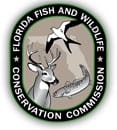Watch the video to see how to catch scallops
Florida information on how to catch scallops
Information below contains the “dos” and “don’ts” on how to catch scallops
Legal Requirements in Florida for Scalloping
Recreational scallopers between the ages of 16 and 65 are required to have a current Florida saltwater fishing license to collect scallops. Non-residents over the age of 16 are required to buy a license. Exemptions include scallopers under 16 years of age, Florida residents 65 years of age or older with proof of residency and age, or scallopers on a charter boat with a valid recreational saltwater fishing license.
Scallop Limits
The bag limit is 2 gallons of whole scallops (in the shell), or 1 pint of scallop meat per person per day with no more than 10 gallons of whole scallops or 1/2 gallon of scallop meat aboard the vessel at any time. Scallops can only be harvested by hand or with a landing or dip net.
Scallop Possession
It is illegal to possess scallops on any waters outside the open harvest areas. It is also illegal to bring scallops to shore outside open harvest areas. For example, it would be legal to take scallops from waters off Homosassa, but it would be illegal to dock your boat in Pasco County with your scallop catch on-board. Map of legal scallop harvest areas.
Diver Down Flag
Whether snorkeling from a boat or wading for scallops, a dive flag is required. Watch this video provided by the Florida Fish and Wildlife Conservation Commission for requirements
Dive flag requirements:
Displayed on boat – must be at least 20 inches by 24 inches. A stiffener is required to keep the flag unfurled. Must be displayed above the highest point of the boat and taken down when divers are out of the water
Displayed on float attached to snorkeler– must be at least 12 inches by 12 inches.
Divers must make reasonable efforts to stay within 300 feet of a divers-down flag on open waters (all waterways other than rivers, inlets or navigation channels) and within 100 feet of a flag within rivers, inlets, or navigation channels.
Vessel operators must make a reasonable effort to maintain a distance of at least 300 feet from divers-down flags on open waters and at least 100 feet from flags on rivers, inlets or navigation channels. Vessels approaching divers-down flags closer than 300 feet in open water and 100 feet in rivers, inlets and navigation channels must slow to idle speed.
Scalloping Equipment
Mask, snorkel and sometimes fins. Scallops are gathered either by hand or with a small dip net. A mesh bag is recommended to keep your scallops in while gathering.
How to Catch Florida Scallops and Proper Handling
The best water depth to find scallops is usually 4 – 8 feet. Look for clear water with sea-grass beds. You will find scallops in the sea-grass or at the edges of the sandy spots. They are usually easiest to see in the areas where the sand bottom meets the edge of the sea-grasses. Scallops may try to swim away when they see you but they do not swim very fast or very far.
Most people scallop from a boat and use a mask, snorkel and fins. They anchor the boat, put up their dive flag and snorkel over the beds, collecting scallops by hand or small dip net. Other useful equipment is a mesh bag to store your scallops while you are underwater gathering as scallops can sometimes pinch.
When you return to your boat, your catch should be immediately placed in a live well or if you do not have a live well, on ice in a cooler keeping the scallops separated from the melting ice water runoff. Scallops are quite sensitive to temperature and will quickly die if not kept cool, however fresh water getting into their shells will also cause them to die. The ideal situation is to keep scallops in a live well while on the water and then place the scallops on ice just prior just to cleaning. The ice makes them easier to open, because the muscle that holds the shells together relaxes. A knife, or even a teaspoon, can be used to open the shells and cut the white muscle free, discarding the shells and unwanted soft parts. Some people use a shop vacumn to clean the unwanted parts after the shells are opened.
For additional information go to the FWC website
